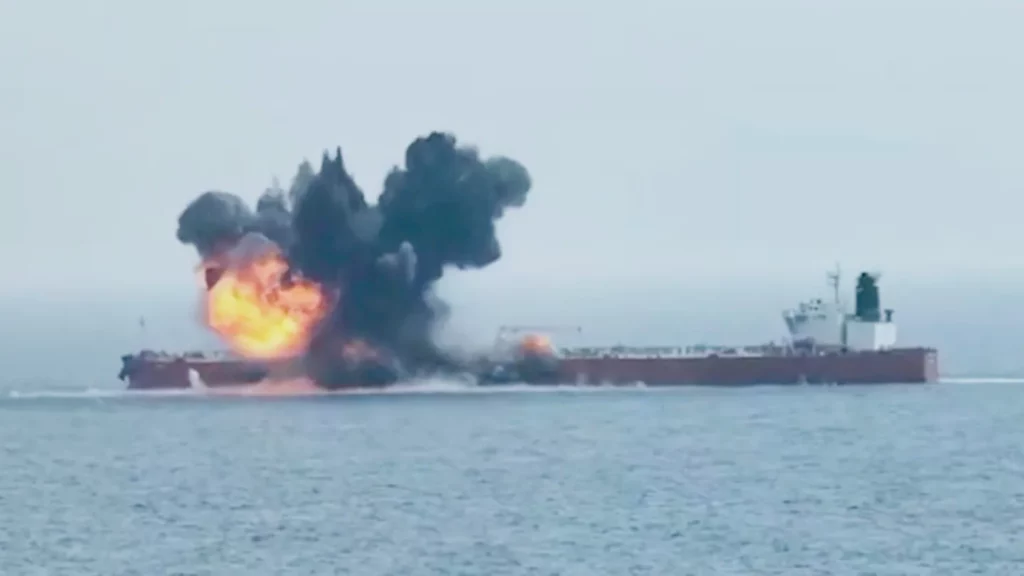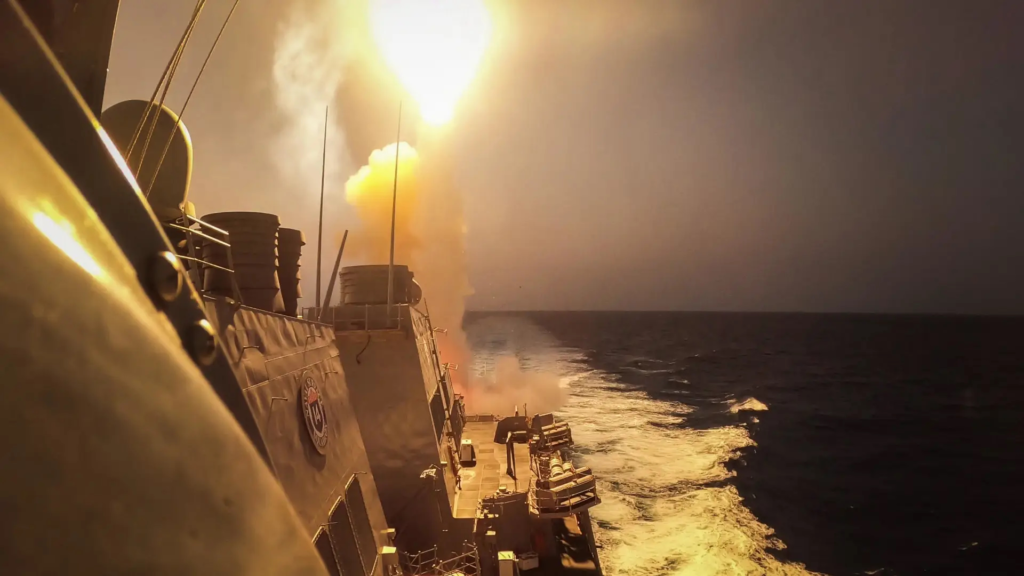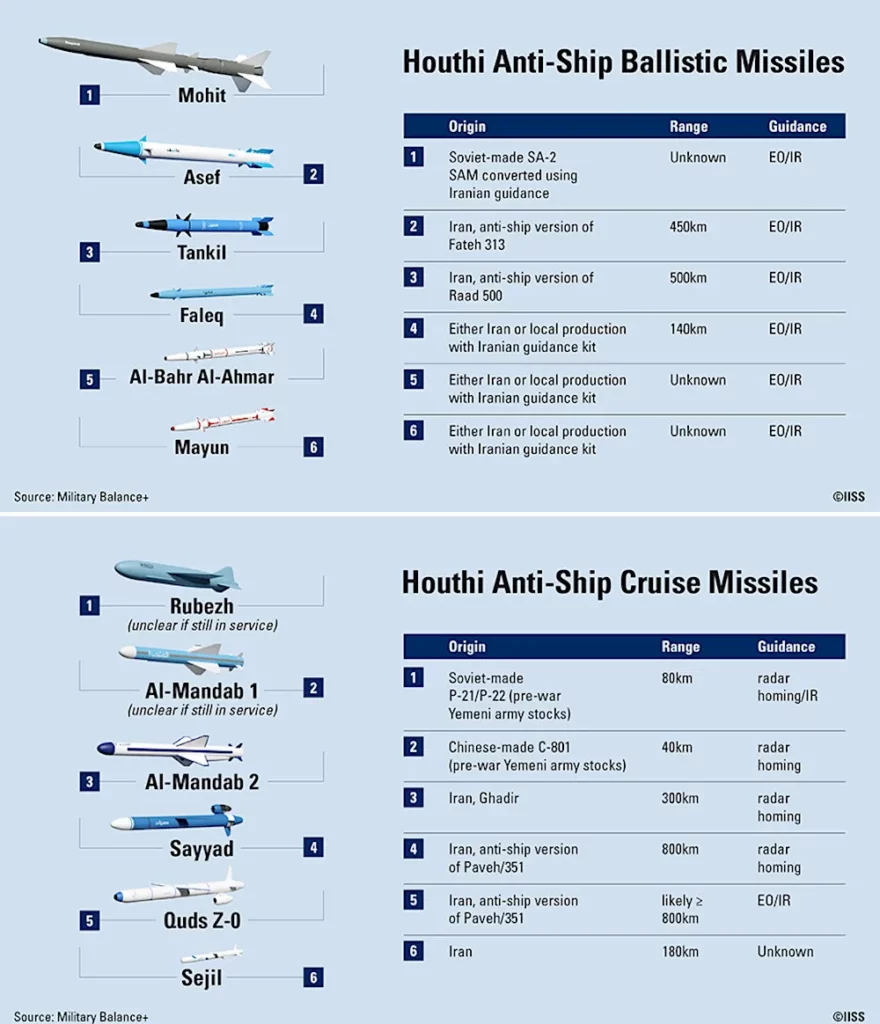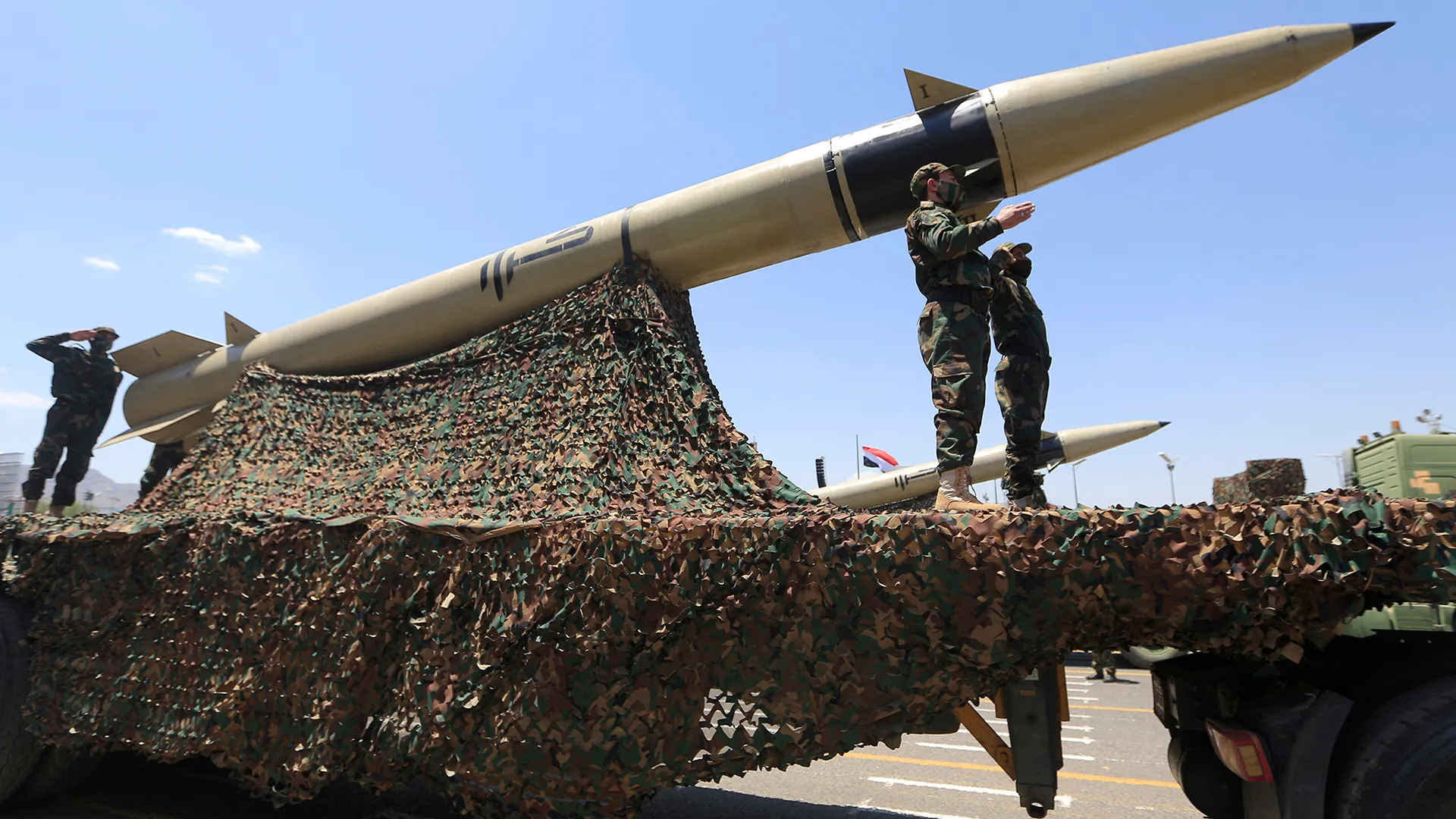EEUU y sus aliados realizan permanentes ataques a las fuerzas de Rebeldes Hothies en Yemen, sobre instalaciones de lanzamiento de misiles, así como infraestructura de fabricación y almacenamiento de los mismos y sus componentes e insumos. El presente expresa que las autoridades de EEUU no disponen de una idea clara de cuánto armamento de este tipo los Houthis disponen, ni cómo hacen para obtener los mismos. Reconocen además, que estos elementos terroristas muestran una notable resiliencia frente a los ataques, así como una gran inventiva y flexibilidad tecnológica, para intentar recomponer sus capacidades. Pareciera que “avanzando aunque se falle” y “ser innovadores”, es la clave de su subsistencia y vigencia como una amenaza grave en la zona del Mar Rojo.
The U.S. remains puzzled about how many weapons the Houthis have or where they get them all, a senior U.S. defense official told The War Zone, adding that the militants are highly innovative when it comes to developing their arsenal. Meanwhile, numerous airstrikes by the U.S. and its allies on Houthi targets in Yemen have not halted the rebel group’s ability to produce the weapons and use them at will, the official said.
“There’s some debate as to what’s in their magazine,” the official told The War Zone during a media engagement at the Air and Space Forces Association Air Warfare Symposium in Aurora, Colorado. “There’s a good bit right now we don’t know about the Houthis.”
The official spoke a day before the U.S. officially designated Ansar Allah – the official name of the Houthis – as a Foreign Terrorist Organization.
The Houthi shipping attacks began in November 2023 in solidarity with Palestinians over the latest war between Israel and Gaza. They have forced ships to avoid the Suez Canal for a far longer route around Africa, boosting cargo costs by nearly $200 billion. The Houthis’ attacks sank two vessels, damaged many others, caused the death of four mariners, and led to many being held hostage after a ship was seized. There were also a lot of Houthi weapons that missed their targets entirely.

In response to these attacks, the U.S. and its allies have engaged numerous Houthi missiles and air and sea drones to protect commercial vessels as well as themselves.

You can read more about the Houthi anti-ship missile arsenal in our in-depth story here.
Despite this ongoing fight, the depth and scope of the Houthi arsenal is largely a mystery, stated the official, who offered begrudging respect for the terror group’s weapons development capabilities.
“What I can tell about the Houthis is they iterate, and they’re pretty innovative,” the official explained. “So we see them putting together weapon systems and put them together in ways, give them a try, and a lot of times they fail. But the military talks about ‘failing forward’ and being innovative, and with a begrudging tip of the hat to the Houthis, they’re actually doing that.”
“We’ve been surprised at times with some of the things that we see them do, and it makes us scratch our head a little bit,” the official noted, adding that the Houthis are “not super technologically advanced, but we do think they’re pretty innovative.”

While the extent of the Houthi weapons stocks is unknown, “we do think that they do a lot of production in-house,” the official told us. “Our assessment right now is that there’s likely some key components and other things that come from Iran or other places, but a lot of the actual production is in Yemen.” The official declined to say what components the Houthis have procured.
The Houthi Red Sea campaign led to nearly constant military engagements with the U.S. and its allies, including air strikes on Houthi targets in Yemen. The most recent U.S. attack took place on Jan. 8, according to U.S. Central Command (CENTCOM). That’s when CENTCOM’s “forces conducted multiple precision strikes against two Iranian-backed Houthi underground Advanced Conventional Weapon (ACW) storage facilities within Houthi-controlled territories of Yemen. The Houthis used these facilities to conduct attacks against U.S. Navy warships and merchant vessels in the southern Red Sea and Gulf of Aden.”
However, the official told us the effect of those attacks is unclear.
“I wouldn’t say we’ve changed their weapons production capabilities, because again, I’ll go back to there’s still a lot of unknowns right now,” the official mused. “We knew some of the threats, we know some of the effects that they try and do. And there are some things we’re still working on.”
The official declined to elaborate.
In January, as a ceasefire between Israel and Hamas was announced, the Houthis pledged to halt shipping attacks. There have been none since. According to another U.S. defense official, the last such Houthi attack took place on Dec. 9-10, when U.S. Navy destroyers USS Stockdale and USS O’Kane “successfully defeated a range of Houthi-launched weapons while transiting the Gulf of Aden,” according to CENTCOM.
Fuente: https://www.twz.com


